Old Browser
Looks like you're visiting us from {countryName}.
Would you like to stay on the current country site or be switched to your country?


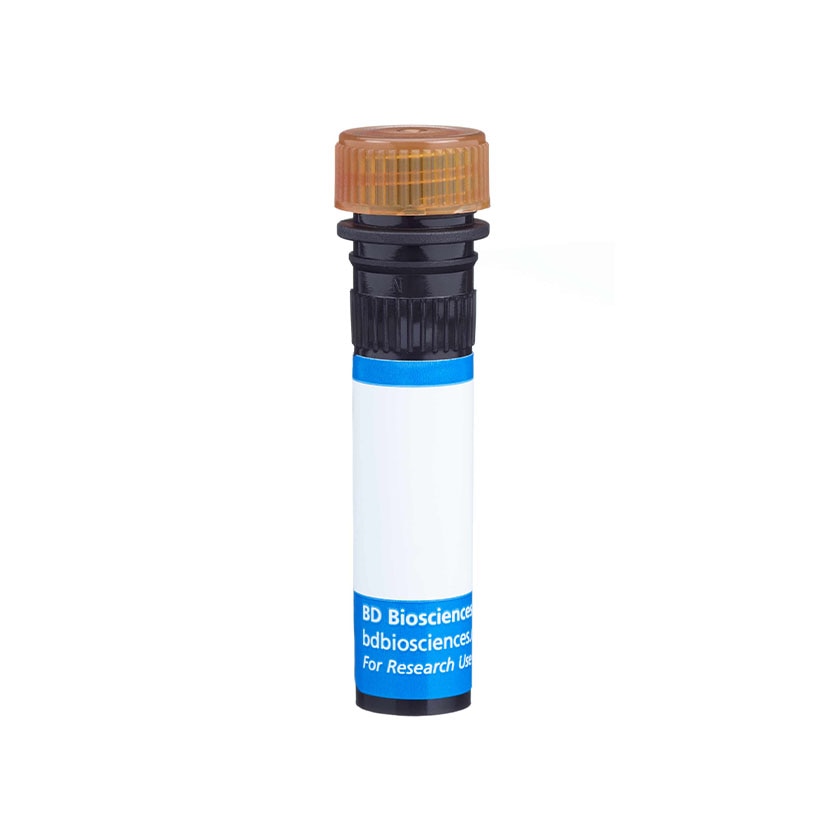

Analysis of Erk1/2 (pT202/pY204) in human peripheral blood lymphocytes. Whole blood was either left untreated (unshaded) or treated (shaded) with 400nM of phorbol 12-myristate 13-acetate (PMA) (Sigma, Cat.# P8139) for 15 minutes at 37°C. The samples were lysed and fixed with 1X BD Phosflow™ Lyse/Fix buffer (Cat. No. 558049) for 10 minutes at 37°C, permeabilized (BD Phosflow™ Perm Buffer III, Cat. No. 558050) on ice for 30 minutes and were then stained with PerCP-CY™5.5 anti-Erk1/2 (pT202/pY204). For data analysis, lymphocytes were selected by scatter profile. Flow cytometry was performed on a BD FACSCalibur™ II flow cytometry system.


BD™ Phosflow PerCP-Cy™5.5 Mouse anti-ERK1/2 (pT202/pY204)

Regulatory Status Legend
Any use of products other than the permitted use without the express written authorization of Becton, Dickinson and Company is strictly prohibited.
Preparation And Storage
Recommended Assay Procedures
This antibody conjugate is suitable for intracellular staining of human whole blood (using BD™ Phosflow Lyse/Fix Buffer) and peripheral blood mononuclear cells (using BD Cytofix™ Fixation Buffer or BD Phosflow™ Fix Buffer I). Any of the three BD Phosflow™ permeabilization buffers may be used.
This mAb was characterized by flow cytometry (Flow) and western blot analysis (WB) using these model systems:
Method Species Cells Treatment Fixation Perm buffer Result
Flow Human PBMC PMA Fixation Buffer I, II or III Positive Staining
Flow Human Whole Blood PMA Lyse/Fix I, II or III Positive Staining
WB Human A431 Cell Lysate EGF Not Applicable Not Applicable 44/42 kDa
Product Notices
- This reagent has been pre-diluted for use at the recommended Volume per Test. We typically use 1 × 10^6 cells in a 100-µl experimental sample (a test).
- Please observe the following precautions: Absorption of visible light can significantly alter the energy transfer occurring in any tandem fluorochrome conjugate; therefore, we recommend that special precautions be taken (such as wrapping vials, tubes, or racks in aluminum foil) to prevent exposure of conjugated reagents, including cells stained with those reagents, to room illumination.
- PerCP-Cy5.5–labelled antibodies can be used with FITC- and R-PE–labelled reagents in single-laser flow cytometers with no significant spectral overlap of PerCP-Cy5.5, FITC, and R-PE fluorescence.
- PerCP-Cy5.5 is optimized for use with a single argon ion laser emitting 488-nm light. Because of the broad absorption spectrum of the tandem fluorochrome, extra care must be taken when using dual-laser cytometers, which may directly excite both PerCP and Cy5.5™. We recommend the use of cross-beam compensation during data acquisition or software compensation during data analysis.
- This product is subject to proprietary rights of Amersham Biosciences Corp. and Carnegie Mellon University and made and sold under license from Amersham Biosciences Corp. This product is licensed for sale only for research. It is not licensed for any other use. If you require a commercial license to use this product and do not have one return this material, unopened to BD Biosciences, 10975 Torreyana Rd, San Diego, CA 92121 and any money paid for the material will be refunded.
- Cy is a trademark of Amersham Biosciences Limited. This conjugated product is sold under license to the following patents: US Patent Nos. 5,486,616; 5,569,587; 5,569,766; 5,627,027.
- Caution: Sodium azide yields highly toxic hydrazoic acid under acidic conditions. Dilute azide compounds in running water before discarding to avoid accumulation of potentially explosive deposits in plumbing.
- Source of all serum proteins is from USDA inspected abattoirs located in the United States.
- For fluorochrome spectra and suitable instrument settings, please refer to our Multicolor Flow Cytometry web page at www.bdbiosciences.com/colors.
- Please refer to www.bdbiosciences.com/us/s/resources for technical protocols.
Companion Products
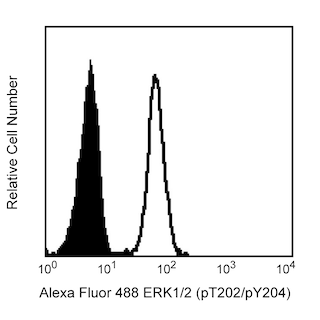

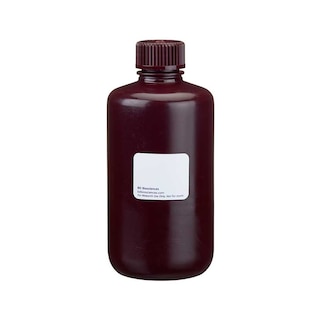

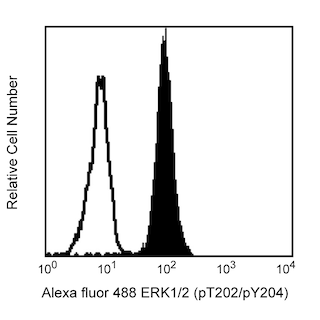
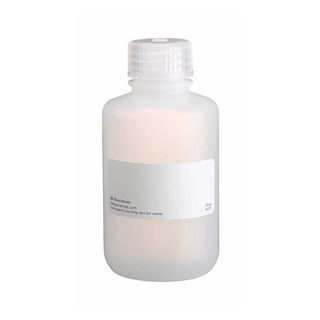
The members of the Mitogen-Activated Protein Kinase (MAPK) family are components of a key signal transduction cascade that links events at the cell surface to responses in the nucleus. The signaling cascade is found in species as varied as yeast and humans, with many of the proteins being well conserved. In mammals the most widely studied members of the cascade are the Extracellular signal-Regulated Kinases, ERK1 (p44 MAPK) and ERK2 (p42 MAPK). ERK1 and ERK2 share 85% homology and are activated by extracellular signals such as growth factors, hormones, and phorbol esters. Activation occurs through a series of phosphorylations by kinases activating other kinases and eventually leading to phosphorylation of the ERKs. Growth factor stimulation leads to activation of Ras and Raf, leading to phosphorylation of MEK1 (MAPK/ERK kinase) which, in turn, activates the ERKs via dual phosphorylation. Once activated, the ERKs phosphorylate other cytoplasmic signalling molecules, cell-surface receptors, microtubule-associated proteins, and transcription factors in the nucleus. Thus, the active ERK has myriad downstream effectors that implicate it in the control of cell proliferation and differentiation, as well as regulation of the cytoskeleton. Furthermore, studies have shown that elevated ERK activity is associated with some cancers.
The 20A monoclonal antibody recognizes the phosphorylated threonine 202 and tyrosine 204 (pT202/pY204) of human ERK1 and pT184/pY186 of human ERK2. The orthologous phosphorylation sites in murine ERK1 and ERK2 are T203/Y205 and T183/Y185.

Development References (4)
-
Cobb MH, Boulton TG, Robbins DJ. Extracellular signal-regulated kinases: ERKs in progress. Cell Regul. 1991; 2:965-978. (Biology). View Reference
-
Kim SC, Hahn JS, Min YH, Yoo NC, Ko YW, Lee WJ. Constitutive activation of extracellular signal-regulated kinase in human acute leukemias: combined role of activation of MEK, hyperexpression of extracellular signal-regulated kinase, and downregulation of a phosphatase, PAC1. Blood. 1999; 93(11):3893-3899. (Clone-specific: In vitro kinase assay, Western blot). View Reference
-
Sivaraman VS, Wang H, Nuovo GJ, Malbon CC. Hyperexpression of mitogen-activated protein kinase in human breast cancer. J Clin Invest. 1997; 99(7):1478-1483. (Biology). View Reference
-
Treisman R. Regulation of transcription by MAP kinase cascades. Curr Opin Cell Biol. 1996; 8:205-215. (Biology). View Reference
Please refer to Support Documents for Quality Certificates
Global - Refer to manufacturer's instructions for use and related User Manuals and Technical data sheets before using this products as described
Comparisons, where applicable, are made against older BD Technology, manual methods or are general performance claims. Comparisons are not made against non-BD technologies, unless otherwise noted.
For Research Use Only. Not for use in diagnostic or therapeutic procedures.
Refer to manufacturer's instructions for use and related User Manuals and Technical Data Sheets before using this product as described.
Comparisons, where applicable, are made against older BD technology, manual methods or are general performance claims. Comparisons are not made against non-BD technologies, unless otherwise noted.
Report a Site Issue
This form is intended to help us improve our website experience. For other support, please visit our Contact Us page.